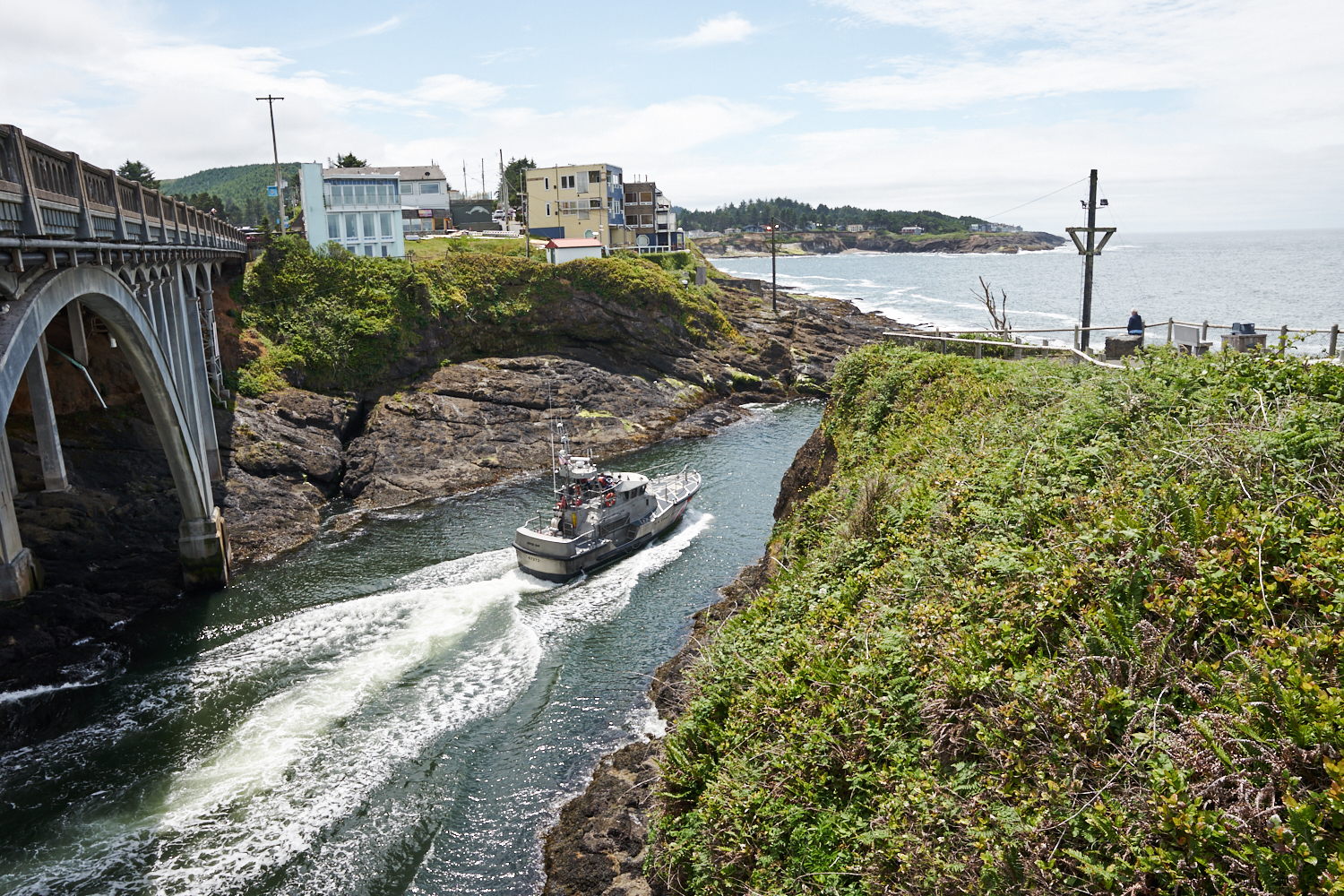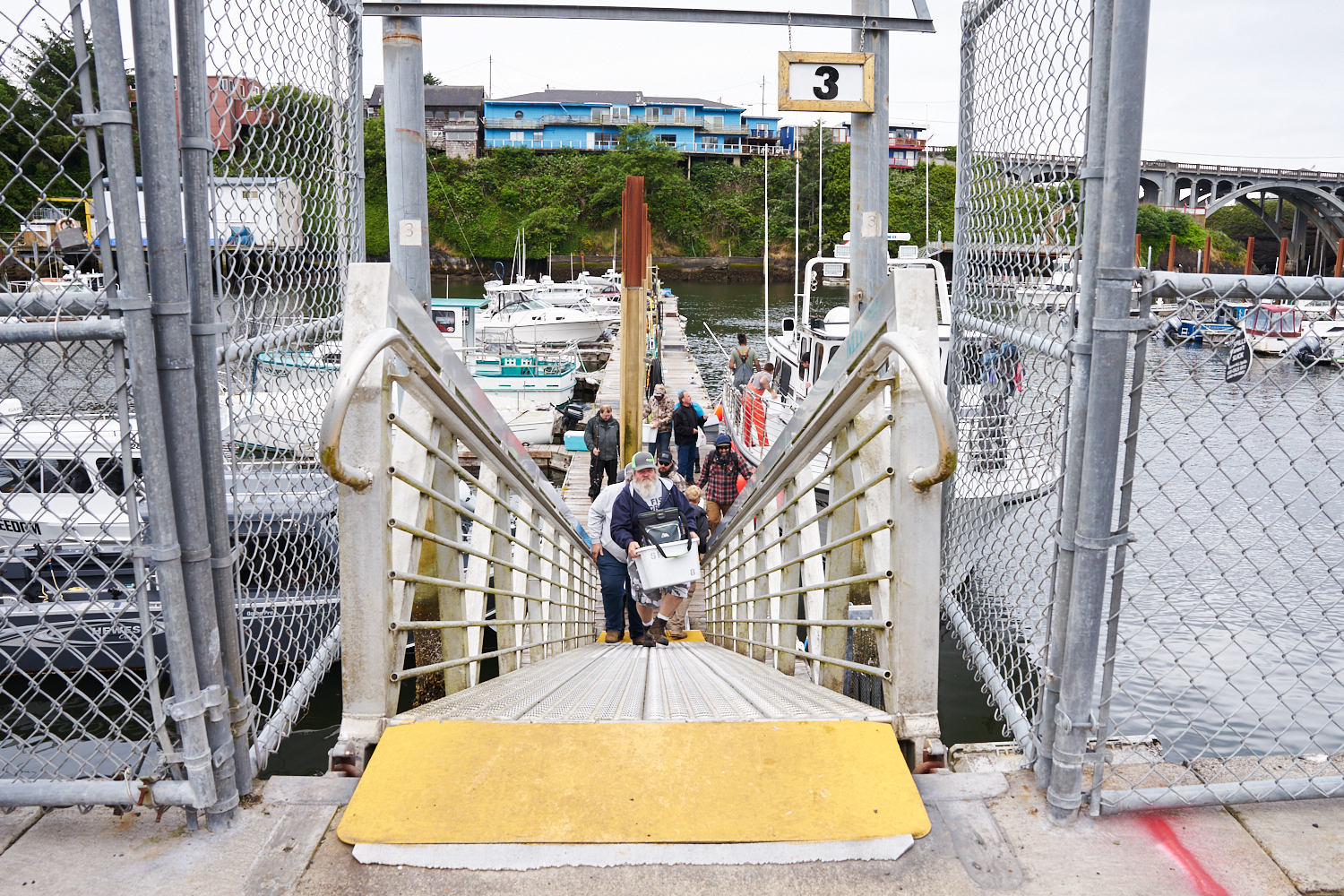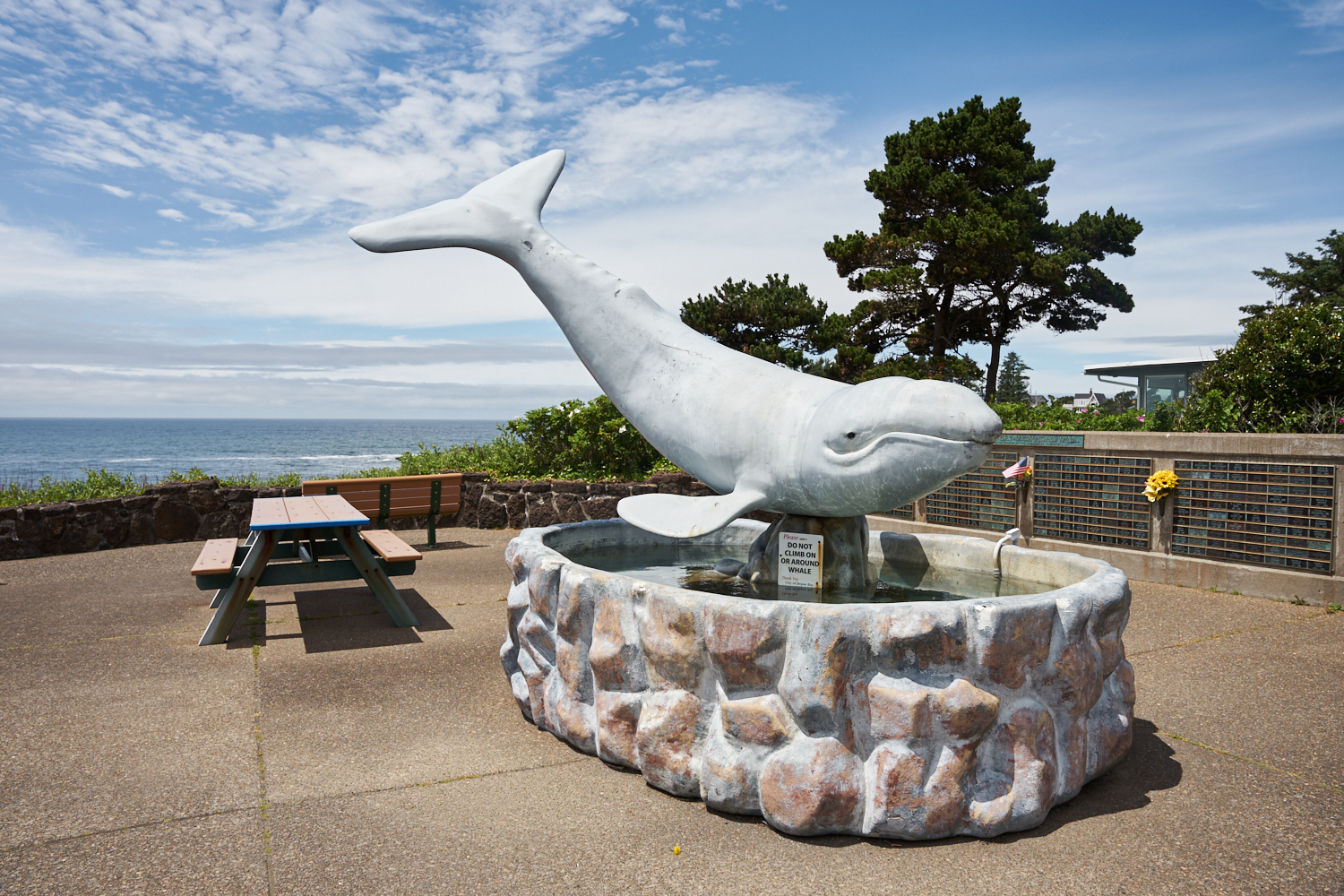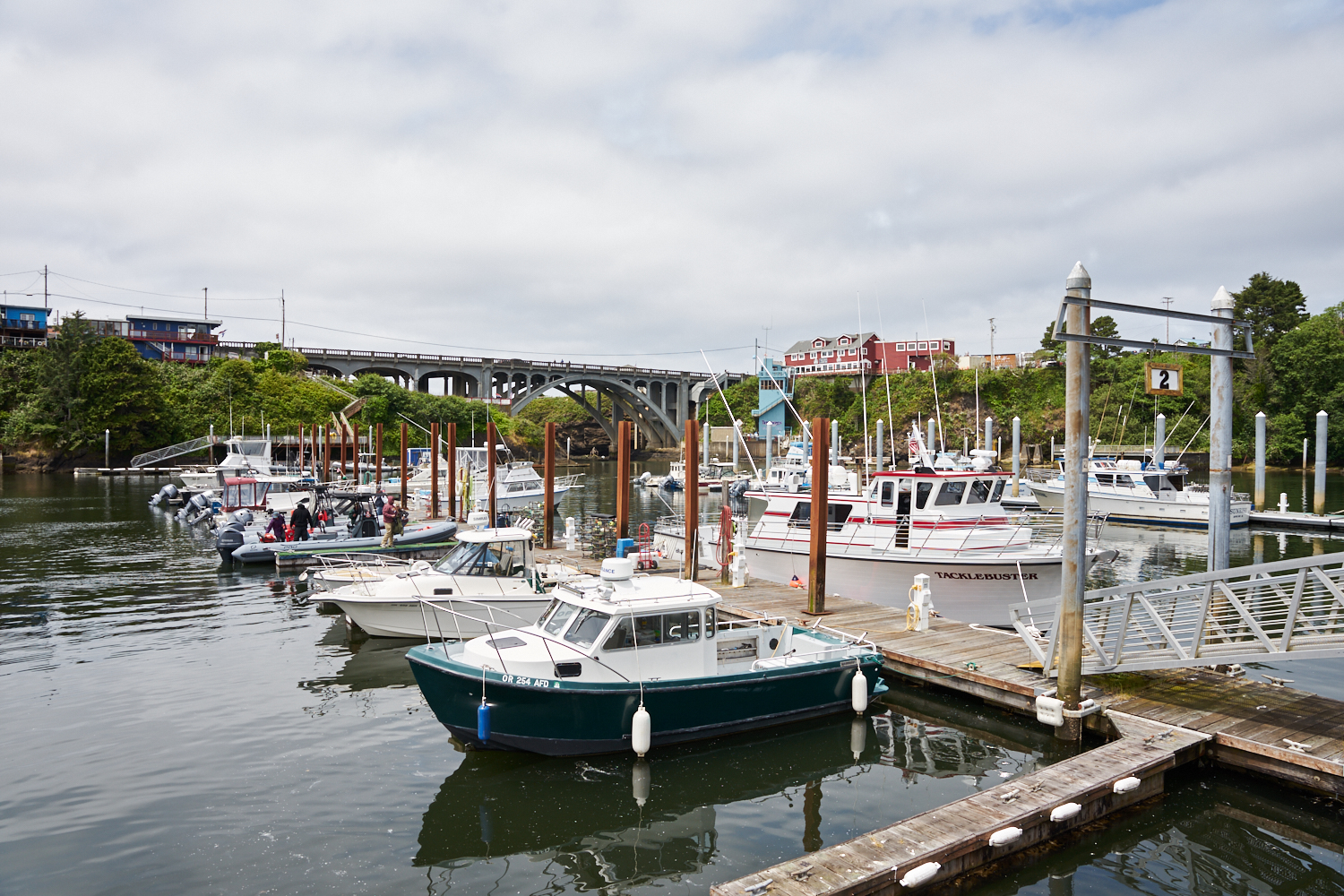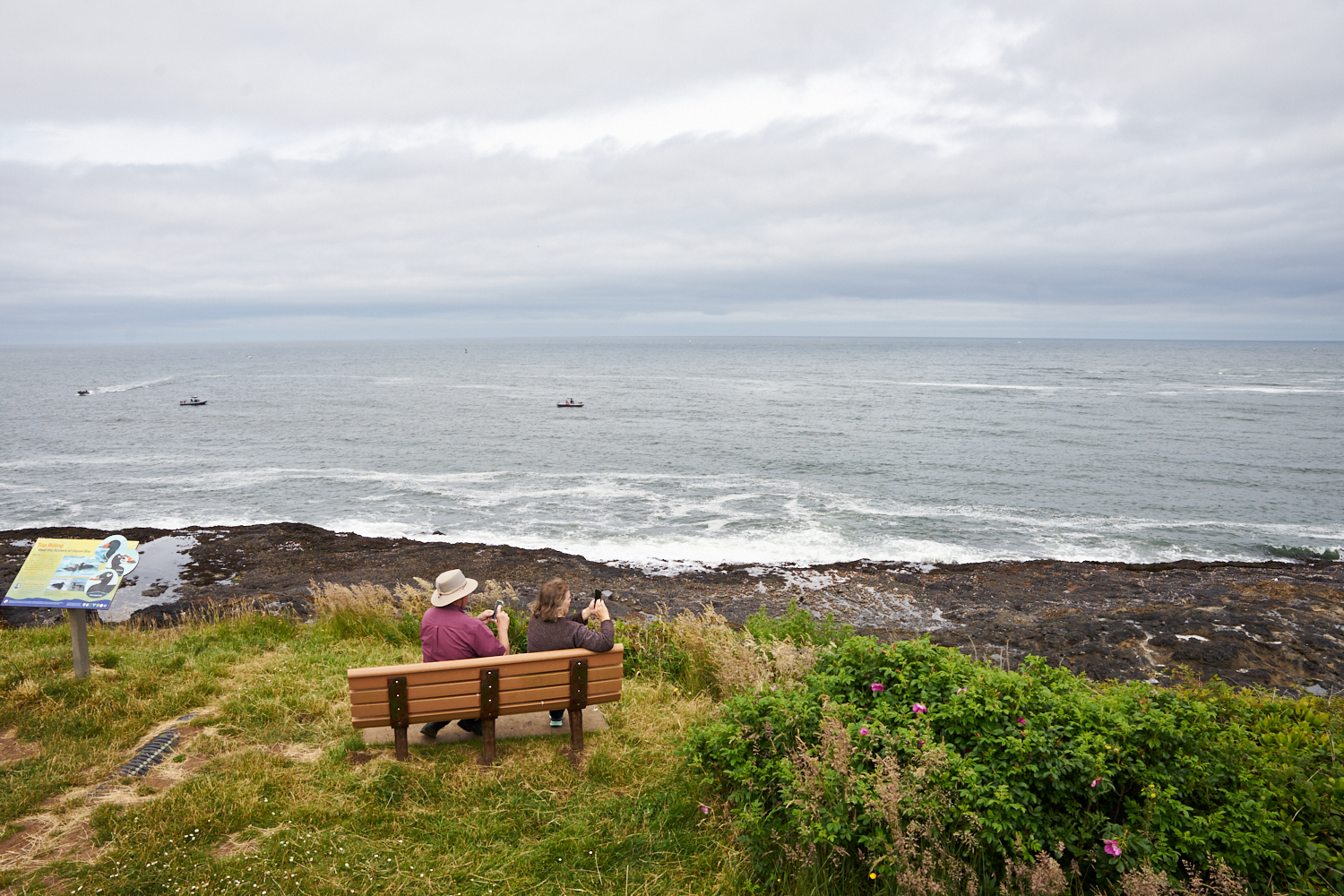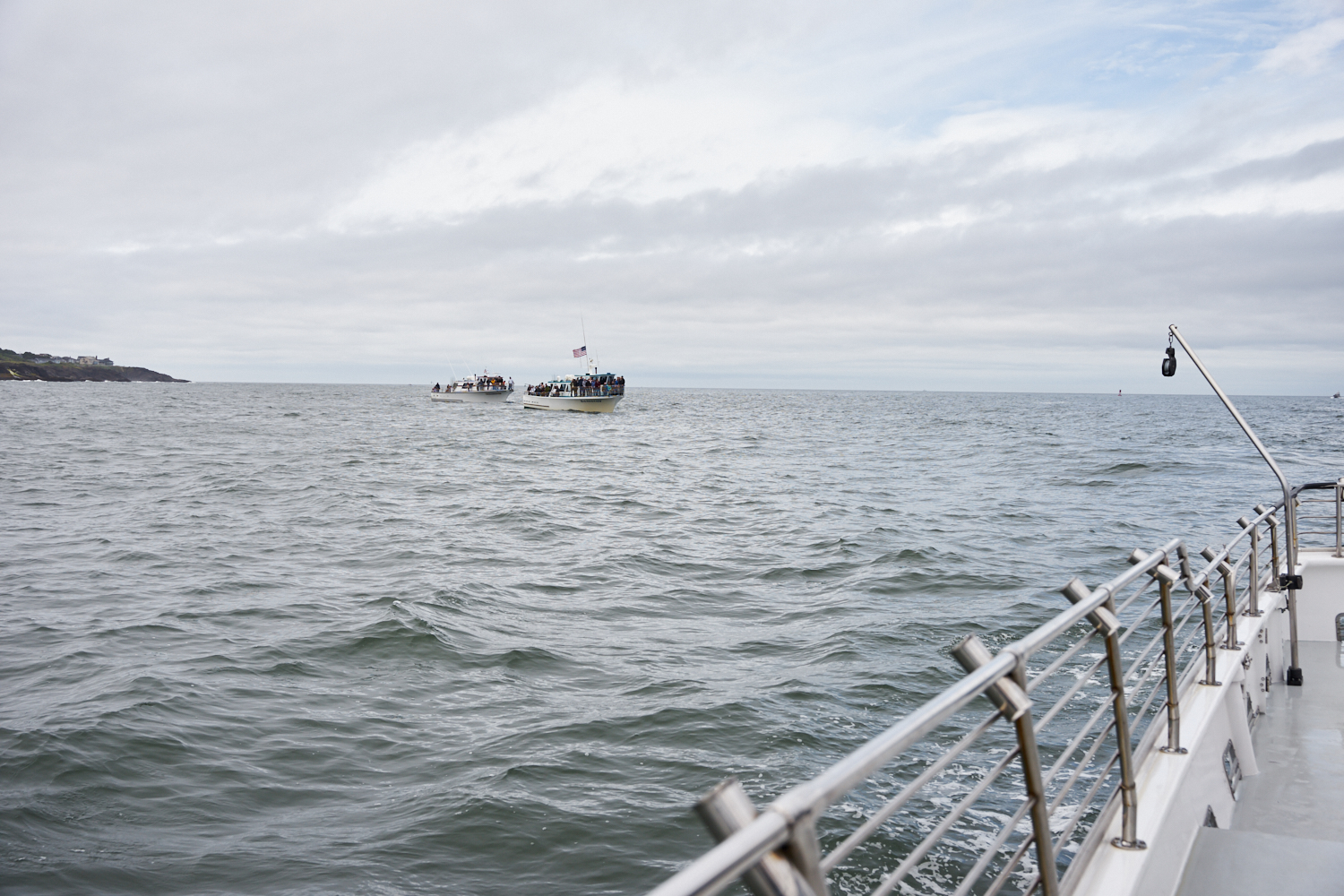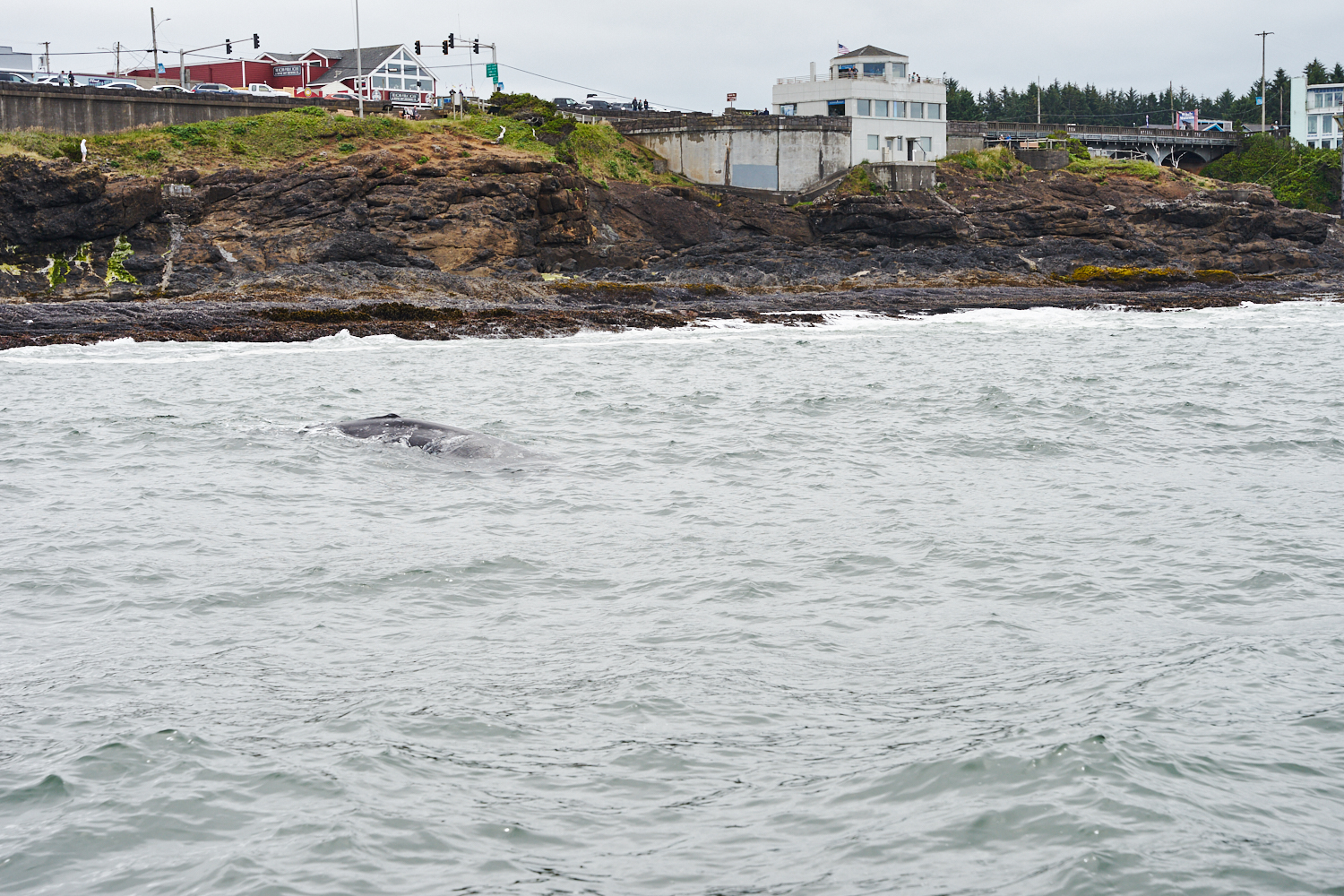Jeurgen “JT” Turner remembers when the first whale watching charter started up in tiny Depoe Bay, Oregon, in the 1970s. Back then, “the world’s smallest navigable harbor” — Depoe Bay’s claim to fame — was home to a mix of commercial fishing enterprises and fishing excursions geared toward tourists. And while whales can be easily spotted from Depoe Bay’s shoreline during migration season, no one had latched onto the idea of taking visitors out on the water to watch them by boat. JT says that first season with one vessel was so successful, the company he worked for invested in a second boat for the following season, and grew from there. “Now everybody around here has a whale watching operation,” he says.
Depoe Bay, tucked into the Oregon coast west of Salem, has always been a popular spot for charter fishing. Its small, sheltered harbor and proximity to the open ocean make it a fishing destination rivaling its much larger neighbors, the hub of Newport to the south and the beach town of Lincoln City to the north.
Both charter fishing and whale watching have been a boon to Depoe Bay’s economy. Fishery collapses in the late 90s and early 2000s shuttered commercial fishing operations and processing plants all along the Pacific Northwest coast, forcing many life-long fishermen to take other paths. Although fish populations have rebounded significantly in the past 25 years, tourism is now the occupation of choice for most of the vessels docked in Depoe Bay’s harbor.
One such operation is Dockside Charters, owned by JT’s son, Tyler Turner, who has embraced both charter fishing and whale watching with his fleet. He says that while he can accommodate a lot of people on a charter fishing excursion, the overhead is higher than whale watching. Fuel especially has been a major concern this summer with diesel prices skyrocketing. This is where Depoe Bay’s unique geography particularly favors whale watching tours.
“In other ports, like Newport, you have to go 10, 15 [miles] out before you hit open ocean,” Turner says. “Here, we can stay close, and we use less fuel.”
He’s not kidding: The narrow channel leading out of Depoe Bay’s harbor opens right into water deep enough for whales to swim. During feeding season, gray whales pop up just yards from the rocky coastline, much to the delight of visitors on the decks of Turner’s boats.
“I still get excited every time I see a whale,” says Turner, who grew up in Depoe Bay. “If my dad could go whale watching from 8 a.m. to 5 p.m., he would.”
Like many small towns transformed into tourism hotspots, it hasn’t always been smooth sailing for Depoe Bay. Housing has become much more expensive for the local population of just over 1600. Property management companies have gobbled up many single-family homes and turned them into vacation rentals. Wealthier retirees from outside the area have chosen the town as their golden-years homestead, and building new affordable housing has become a contentious political topic. But despite the rough patches, Turner and his partner Eva, who runs much of the administrative side of Dockside, say that they are in favor of enticing visitors to Depoe Bay as much as possible. And for gray whale spotting, JT says there’s no place for tourists like Depoe Bay.
“Down in San Francisco, the Bay Area, they have a lot of tours but they are mostly staying within the bay,” he says. “Seattle has a lot of whale watching but they are looking at orcas. Depoe Bay—we’re the gray whale capital.”
All photos copyright Sarah Arnoff Yeoman, 2022

